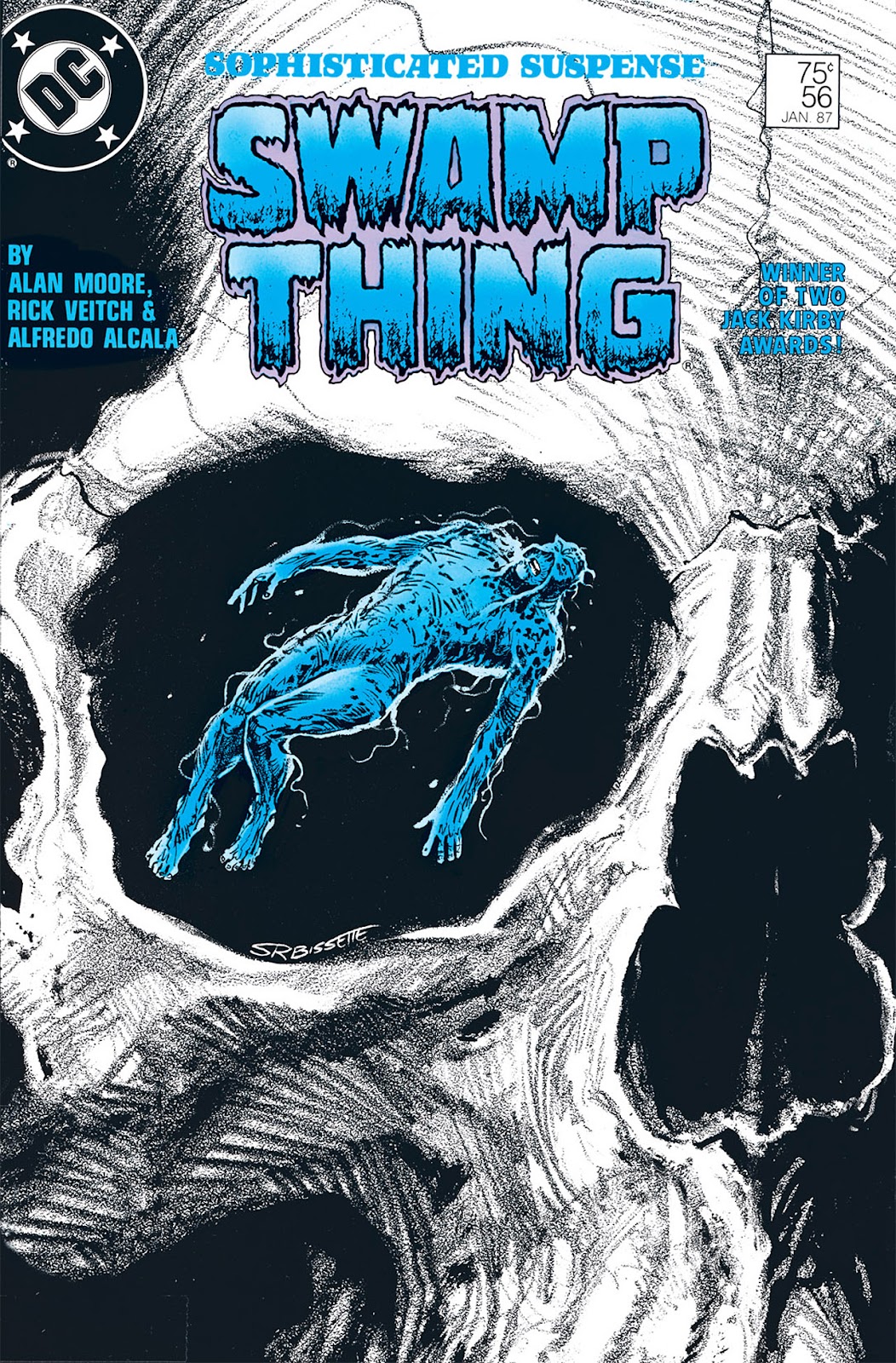Symbolism in a Blue Heaven By Theodore Kemna
Symbolism in a Blue Heaven
By Theodore Kemna
By Theodore Kemna
I recently finished rereading the entirety of The Saga of The Swamp Thing by Alan Moore, Steve Bissette, John Totleben, Alfredo Alcala, Rick Veitch and others. This book series follows a character known as the Swamp Thing, the consciousness of a dead man in the body of a plant monster, or as the book puts it early on, a "ghost hiding in weeds," and his romance between his human friend Abigail Arcane-Cable. I have already focused on a part of this series before, when I began my reread, but with over 45 issues of content I felt there is enough for me to do another post about it, especially because of how good it is. For this post I will be focusing on issue 56 titled "My Blue Heaven," written by Alan Moore with art by Rick Veitch and Alfredo Alcala, an issue packed with heavy symbolism, beautiful art, and an exploration of the concept of denial and isolation.
The cover of the issue
The first thing I wish to focus on is the symbolism in the issue. It begins with Swamp Thing thinking to himself the phrase "Everything is blue," a term that is, for lack of a better phrase, a double entendre in this issue. Within the following context it is used to describe the planet he is trapped on after being shot across the universe away from Earth a matter of issues ago, a desolate planet covered only in alien plant life of different shades of blue. But the phrase can also be used to interpret his emotional state, with the color blue being used to symbolize his utter despair and lack of hope about his ability to return to the woman he loves.
As the issue goes on, the Swamp Thing tumbles farther into despair and denial. He uses his ability to control plant life to recreate his home town, Houma, Louisiana, as well as its inhabitants, including an imperfect recreation of his love, Abby. This soothes him for a time, as he denies he is apart from his life and pretends to live normally in his fake blue world, but even he knows deep down this is unhealthy. This truth is personified in his plant recreation of his sometimes-friend John Constantine, who often serves to disrupt the life of the Swamp Thing. His artificial recreation approaches Swamp Thing while he is eating one day and begins to remind him he is merely talking to himself, not Constantine, not Abby, not anyone else, and that his world he is living in is a lie. This begins to destabilize the world of denial around Swamp Thing, which is only bolstered as it begins to rain.
Swamp Thing's interaction with his recreation of Constantine
I won't spoil what happens next as it is genuinely horrifying and my words would not do the art or writing justice, but eventually the blue town he's built does collapse and Swamp Thing is forced to confront the very thing he's been attempting to avoid, his separation from his love Abby, symbolized by a confrontation with his imperfect plant clone of her he created. The book reaches a conclusion and a solution to its message without being preachy or outright telling the reader with words. It shows them in I think the best way it could, but you'll have to read it for yourself to find out.
Overall I really recommend this issue, especially within the context of the entire series. It's elegantly written and beautiful to look at. You won't regret picking it up.


I think you did a great job with this post. My favorite part was when you discussed how the Swamp Thing thought "everything is blue." Your explanation was helpful as to how this incorporates symbolism and it helped me to gain a perspective on this book.
ReplyDeleteI really enjoyed reading this blog post! Very well written and explained. I enjoyed how you broke down the incorporations to symbolism in the text, and I was able to follow along with this blog post as if I had previously read the book.
ReplyDeleteGreat job on this post! I think you encapsulated the symbolism of using the phrase everything is blue very well. You described the plot of the book really good as well, while still explaining symbolism thoroughly. Great job!
ReplyDelete